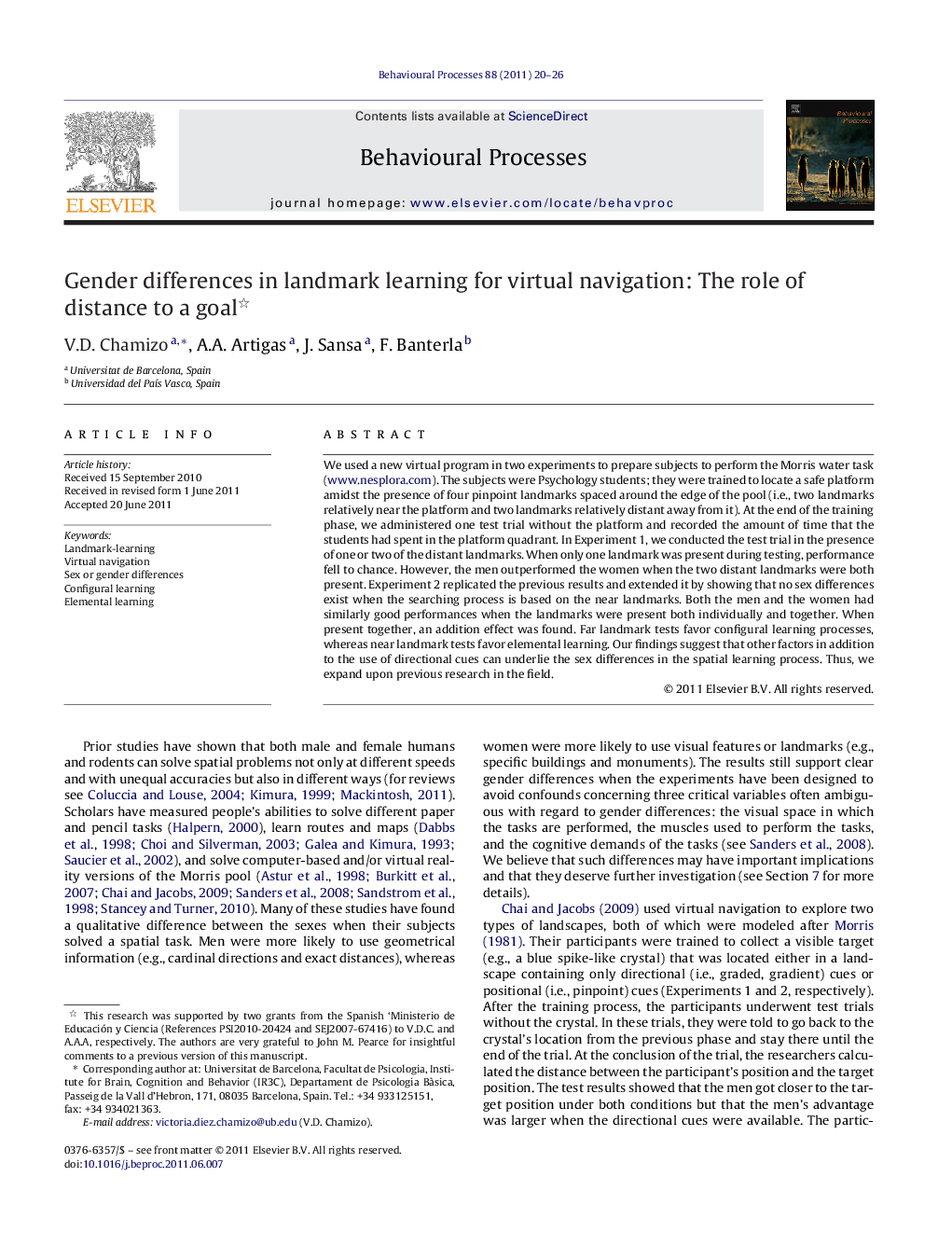| کد مقاله | کد نشریه | سال انتشار | مقاله انگلیسی | نسخه تمام متن |
|---|---|---|---|---|
| 2427110 | 1105945 | 2011 | 7 صفحه PDF | دانلود رایگان |

We used a new virtual program in two experiments to prepare subjects to perform the Morris water task (www.nesplora.com). The subjects were Psychology students; they were trained to locate a safe platform amidst the presence of four pinpoint landmarks spaced around the edge of the pool (i.e., two landmarks relatively near the platform and two landmarks relatively distant away from it). At the end of the training phase, we administered one test trial without the platform and recorded the amount of time that the students had spent in the platform quadrant. In Experiment 1, we conducted the test trial in the presence of one or two of the distant landmarks. When only one landmark was present during testing, performance fell to chance. However, the men outperformed the women when the two distant landmarks were both present. Experiment 2 replicated the previous results and extended it by showing that no sex differences exist when the searching process is based on the near landmarks. Both the men and the women had similarly good performances when the landmarks were present both individually and together. When present together, an addition effect was found. Far landmark tests favor configural learning processes, whereas near landmark tests favor elemental learning. Our findings suggest that other factors in addition to the use of directional cues can underlie the sex differences in the spatial learning process. Thus, we expand upon previous research in the field.
► Our experiments show a clear male advantage when spatial searching is based on multiple pinpoint landmarks relatively distant from a goal, in the absence of directional cues.
► Consequently, the results suggest that other factors, in addition to making use of directional cues, underlie sex differences in spatial learning.
Journal: Behavioural Processes - Volume 88, Issue 1, September 2011, Pages 20–26